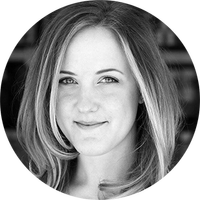How a blind Vietnam veteran creates award-winning art
A bullet fragment claimed Jim Stevens' eyesight. But that hasn't stopped him from creating amazing images.


Painter and sculptor Jim Stevens has been a professional artist for more than 15 years. He vividly captures portraits using oils, acrylics, and his trusty yellow no. 2 school pencil, the kind with a silver ferrule and a pink eraser on the end. Stevens' award-winning work is collected internationally. He's been featured in galleries in Seattle and Denver, where he lives.
He is also legally blind.
In 1970, Stevens was a sergeant in the U.S. army when he was shot in the head during a combat mission in Vietnam. At the military hospital at Cam Ranh Bay, surgeons removed two bullet fragments but couldn't retrieve the smaller pieces. He was told they would probably never bother him, and for 23 years, aside from occasional migraines, they didn't.
The Week
Escape your echo chamber. Get the facts behind the news, plus analysis from multiple perspectives.

Sign up for The Week's Free Newsletters
From our morning news briefing to a weekly Good News Newsletter, get the best of The Week delivered directly to your inbox.
From our morning news briefing to a weekly Good News Newsletter, get the best of The Week delivered directly to your inbox.
After leaving the army, Stevens began teaching at the University of Colorado. He was preparing a lesson plan when what he was typing on his computer started to disappear. "At first I thought there was something wrong with the computer," he says. "Then I looked down at my notes and half of them had gone too and I realized it wasn't the computer, it was me."
When he woke later in the hospital, he was told that a bullet fragment in his head had shifted, causing a stroke in his visual cortex — the part of the brain that processes sensory nerve impulses from the eyes. In just 30 minutes, Stevens' vision had been reduced to a pin-dot in each eye. Doctors said his eyesight would never return to normal.
Stevens' immediate reaction was anger. He took a crowbar to his motorcycle when the DMV refused to renew his license and resented the white cane he now needed to get around. He lost his job, his marriage disintegrated, and suddenly he was the blind, single parent of two young daughters. Depression threatened to crush him completely.
Then one day in 2000, his daughters urged him to take up art again. Stevens' grandmother had taught him to draw and paint when he was a boy. Though he never went to art school, he later studied with the sculptor Ed Dwight as well as Ukrainian stone and gem-carving master Vasily Konovalenko.
A free daily email with the biggest news stories of the day – and the best features from TheWeek.com
Despite his career in the military and academia, art was always something Stevens kept in his back pocket, working on it whenever he had the opportunity. But after losing his sight, he took a baseball bat to every piece of art in his studio. He hadn't created anything since.
His first attempt was a carving of a wizard, requested by his daughter Megghan. At one point, he became so frustrated he picked up the piece and hurled it across the room. Megghan sat it back down in front her father and told him, "You promised not to quit."
Some 900 hours later, Stevens finished the carving and realized that, despite his disability, he could still create art. He found a variety of special lenses to improve his technical skills and spent the next two years relearning his craft. But it was helping his 6-year-old grandson untangle a mess of monofilament fishing line in his backyard that gave Stevens the inspiration for a new style of art.
"As the clouds went over, they caused the monofilament on my fingers to appear to ripple," he explains. "It was such an arresting look, I couldn't get it out of my head."
He spent the next five months figuring out how to take that thought and create art with it.
To create a portrait, he uses photographs taken from different angles and redraws them until he understands his subject's facial features in their entirety. Because he can't see the whole image at once, he then produces a dot matrix which acts as a guide. By counting the dots and working in small sections, he knows where each section stops and the next starts, and where to blend the two together.
"Without the vision I had before, every step of painting is patience," he explains.
Stevens runs strands of monofilament across eight layout boards, and using his dot matrix method, paints each one with the same image but different shading. Then he strings the strands inside a clear acrylic case, which is easier said than done — lining up each layer and each strand is an exact science.
One monofilament painting is made up of eight layers with more than a thousand strands and takes Stevens about two months to complete. The monochrome images have a striking depth and are unmistakably accurate, yet viewed from the side they appear suspended in space like an illusion.
This play on shifting perspectives, light, and tone is central to Stevens' work. "I can pick up lights and darks best with what little vision I have," he explains, "and so working in tonal qualities to create an image is something I really enjoy."
Most of his work comes from commissions. These days, he's so busy with his art he's "forgotten to be angry." He's also director of the Veterans Arts Council at VFW Post 1 in Denver, the first VFW post in America, which unusually has an art gallery instead of a bar.
"For a lot of veterans, especially combat veterans, art has a way of refocusing their attention into something more constructive than feeling sorry for themselves or angry all the time," he says. "One gentleman was considering suicide until he got his artwork into Post 1 and people began buying it. It gave him a new lease of life. He had a purpose again."
This year, Stevens won the Veteran's Administration National Gold Medal for Fine Art, an award of which he feels especially proud given that it was decided by the ex-servicemen and women with whom he feels "a special kinship."
But his accomplishments go beyond visual arts. At the age of 51, Stevens took up martial arts and became the oldest man — and only legally blind one — to win the men's fighting competition at the multi-state Tournament of Champions. His sensei made sure no one knew Stevens was blind until the competition was over.
Abigail Edge is a British freelance journalist living in Denver, Colorado. Her writing can also be found at The Guardian, The Independent, 5280 Magazine, and other places. She is currently working on her first book.
-
 Political cartoons for January 4
Political cartoons for January 4Cartoons Sunday's political cartoons include a resolution to learn a new language, and new names in Hades and on battleships
-
 The ultimate films of 2025 by genre
The ultimate films of 2025 by genreThe Week Recommends From comedies to thrillers, documentaries to animations, 2025 featured some unforgettable film moments
-
 Political cartoons for January 3
Political cartoons for January 3Cartoons Saturday's political cartoons include citizen journalists, self-reflective AI, and Donald Trump's transparency
